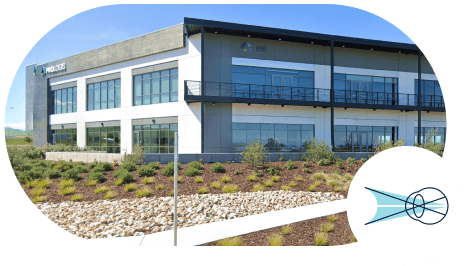Preserving Your Vision With Age-Related Macular Degeneration (AMD)

As we get older, there are many conditions that can impact our vision. One of the most common conditions that affect adults over the age of 50 is age-related macular degeneration (AMD). It’s estimated that up to 15 million people in North America have AMD. AMD is also the leading cause of vision loss in older adults in the United States.
However, being diagnosed with AMD does not automatically mean you will lose your vision. Through preventative care, many patients with AMD are able to stave off the damaging effects of macular degeneration and retain good vision throughout their lives. The key to preserving your vision with AMD is to be knowledgeable about the disease and vigilant about your eye health.
What Is AMD?
The retina, which is the light-sensitive tissue that lines the back of the eye, consists of two main subregions: the peripheral retina and the macula. The macula is the central region of the retina and the peripheral retina is the outer portion that surrounds the macula. The peripheral retina controls our ability to see out of the corners of our eyes, while the macula controls what is known as central vision. Central vision is our primary mode of seeing. It’s how we use our eyes to read, drive, see in fine detail, perceive color, recognize faces, and more. In AMD, the macula begins to deteriorate and lose functionality, resulting in disruptions to our central vision.
There are two types of AMD: dry and wet. Dry AMD is more common than wet AMD and is not as serious. In dry AMD, the retina accumulates a substance known as drusen, which is a yellowish deposit of cellular debris that can damage the retina. In most cases, retinal damage from dry AMD is minor and symptoms are mild. The most common symptoms of dry AMD are blurry vision and the need for a brighter light to see. At this stage, AMD is fairly easy to manage.
However, if drusen deposits continue to increase in quantity and size, they can start to cause more extensive damage and have a serious impact on the retina’s ability to function. At this point, dry AMD can sometimes progress into wet AMD, which is characterized by the process of abnormal neovascularization.
Neovascularization is the process of new blood vessel formation. As a retinal pathology, neovascularization causes the development of abnormal blood vessels under the retina. These abnormal blood vessels have irregular structures, are exceedingly fragile, and tend to bleed into the retina. This can cause sudden, aggressive visual disruptions, including:
- Visual distortions
- Intense blurriness
- A blurry or dark spot in your central field of vision
- Difficulty seeing fine details or recognizing faces
- Decreased color vision
- Darkened areas in your field of vision
In the most severe cases of wet AMD, permanent vision loss can occur.
How to Prevent Vision Loss With AMD
Unfortunately, there is no cure for AMD. The most important thing patients should focus on is preventive care by maintaining healthy lifestyle habits (eating healthily, exercising, not smoking, etc.) and understanding the risk factors for developing or worsening AMD. The primary risk factors include:
- Being over the age of 55
- Being a smoker
- Underlying conditions such as diabetes, high blood pressure, or cardiovascular issues
- Having a high body mass index
- Having a family history of AMD
- Not protecting your eyes from UV exposure
These risk factors don’t necessarily mean you definitely have dry or wet AMD, but indicate that you have a higher chance of developing it. If you are experiencing visual disturbances and also have any of these risk factors, it’s important that you schedule an appointment with a retina specialist as soon as possible. Remember, early detection can make a huge difference in saving your vision and your ability to enjoy the sights of life for many years to come.
If you’re concerned about age-related macular degeneration or are in need of care in Northern California, contact Retinal Consultants Medical Group today.


